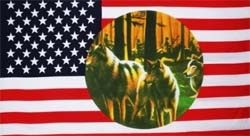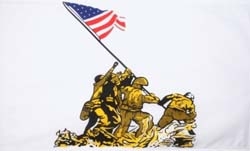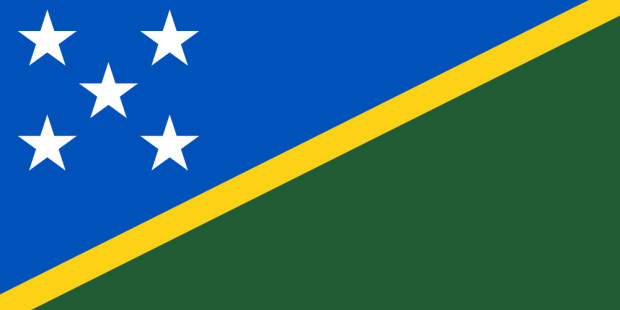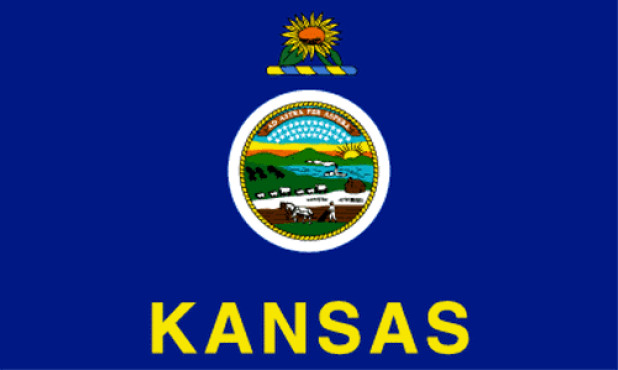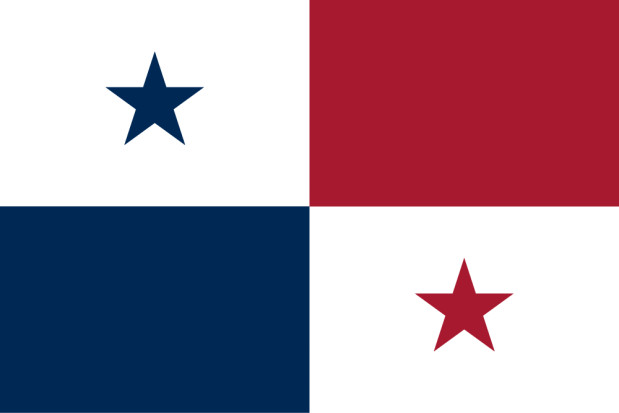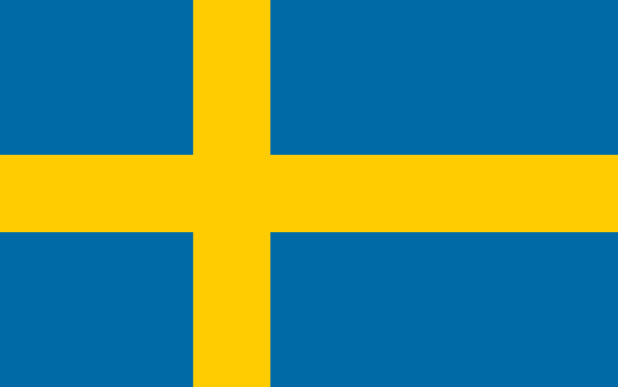Flag of United States of America (USA)
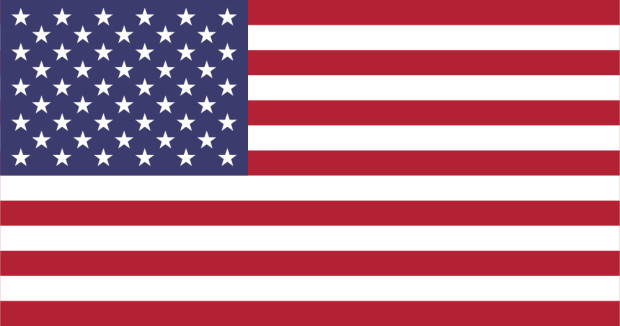
Listen to anthem
Top sellers from our flag shop
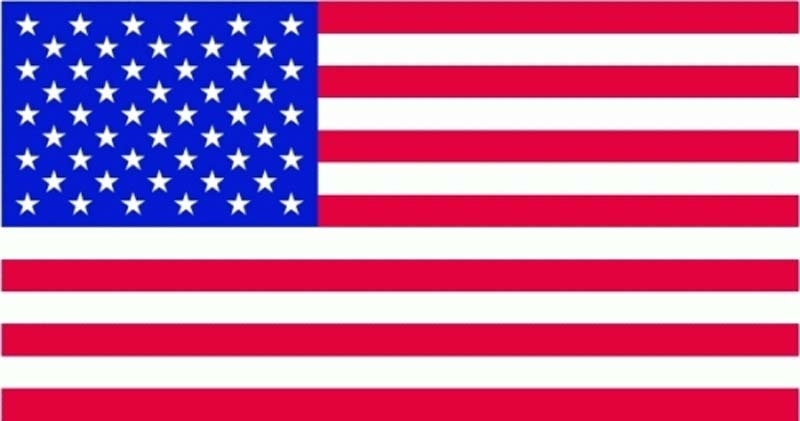
USA Flagge 90x150 cm Sonderangebot 75d
8,32 €
Show in shop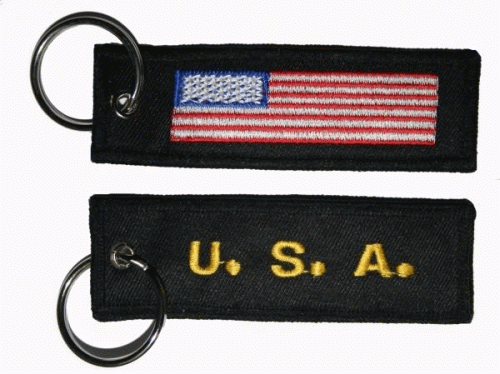
USA Schlüsselanhänger
1,95 €
Show in shopBackground knowledge
The flag of the United States of America is called the "Star-Spangled Banner" (nicknamed Stars and Stripes). It consists of 7 red and 6 white stripes, representing the 13 founding states, and a blue flag field ("Gösch") in the upper left corner, whose currently 50 white stars symbolize the 50 states of the USA. Pursuant to Section 2 of the Flag Law of the United States, upon the admission of an additional state, another star shall be added effective the following July 4 (Independence Day).
The colors red, white and blue have their origin in the Union Jack as the flag of the English colonies. Their symbolism in the star-spangled banner is: white for purity and innocence, red for valor and hardiness, and blue for vigilance, perseverance, and justice.
The flag is sung about in the national anthem of the United States, The Star-Spangled Banner. Flag Day is celebrated on June 14, but is a state holiday only in Pennsylvania and American Samoa (on June 17).
Origin and history of the American flag
At the time of the independence movements and unrest in the late 18th century, the Thirteen English Colonies in America had various revolutionary flags as symbols of togetherness. One of the most important of these flags, which can also be considered the predecessor of the first Union flag, was the Sons of Liberty Flag of 1775, which was used by the Sons of Liberty activists to demonstrate the unity of the colonies. It initially consisted of nine vertical stripes colored alternately red and white. These stripes presumably represented the nine colonies that had sent representatives to the Stamp Act Congress of 1765, at which public demonstrations against the British Stamp Act were held. Later, the flag consisted of thirteen now horizontal stripes, also alternately colored.
During the early years of the Revolution, the Continental Flag, also known as the Grand Union Flag, increasingly prevailed. It was based on the Sons of Liberty Flag with its 13 red and white stripes and also contained the British Union Jack in the gösch. This made it relatively easy to make from the Red Ensign of the British Navy by sewing on white stripes. Since the flag bears a strong resemblance to that of the British East India Company, it has been suggested that it was the inspiration for the Continental Flag. Where the flag actually got its appearance from will not be conclusively determined today.
The Second Continental Congress passed a resolution on the appearance of the flag of the United States in Philadelphia on June 14, 1777, less than a year after the Declaration of Independence. It stated that the flag shall contain thirteen stripes, alternately colored red and white. In addition, the unity of the states would be represented by thirteen stars located in a blue field. Neither the arrangement of the stars, nor the number of their rays was specified, so initially there were some interpretations of the flag. For example, the stars were arranged in rows or as a circle, as on the design said to be by Elizabeth (Betsy) Ross, a Philadelphia flag seamstress. However, this design is now attributed to Francis Hopkinson, a member of Congress and co-signer of the Declaration of Independence. His design, therefore referred to as the Francis Hopkinson Flag, also featured the 13 white stars in offset columns on a blue background in the gösch. The thirteen stripes were retained.
Between 1795 and 1814, Vermont and Kentucky joined the Union, so the flag now featured 15 stars and 15 stripes arranged in rows. It flew over Fort McHenry in Baltimore Harbor during the War of 1812 and inspired Francis Scott Key (1779-1843) to write the song The Star-Spangled Banner on the night of September 13, 1813, which became the national anthem by congressional act in 1931.
Flag of Fort Sumter, 1861.
In 1818, Congress decided to limit the number of stripes to 13 but, in contrast, to add a new star for each newly added state on July 4 after its accession. No regulation was made about the formation of the stars as well as their color (white or gold as especially in the Civil War). Therefore, during the 19th century, various flags appeared, each with a different arrangement of the stars in the upper left corner, such as the Great Star Flag of 1837, in which the stars were arranged in the shape of a large star, or the Fort Sumter Flag, which flew at the start of the Civil War in 1861 and showed the stars in a diamond shape. Perhaps the most striking pattern was contained in the 1877 design of the 38 Star Flag, in which a central star (for Colorado) was surrounded by two rings of stars.
It was not until 1912 that the design of the now 48 stars (at that time) in row form and their white color became the official standard.
In 1942, Congress passed a law (United States Flag Code, Public Law 77-826) prescribing a fixed code of conduct for the use of the flag - including the speed at which it was to be hoisted and retrieved and when it was to be flown at schools during school hours.
In 1953, an amendment to this code allowed the United Nations flag to be raised above the Star-Spangled Banner.
On July 4, 1960, the flag was changed for the last time after Alaska was declared the 49th and Hawaii the 50th state of the United States on January 3, 1959, and August 21, 1959, respectively.
On May 31, 2002, Secretary of the Navy Gordon R. England declared the First Navy Jack the official gösch of the United States Navy in the War on Terror.
Source: Wikipedia
Hymn
The Starry Banner
Oh, say what you can see, in the daily dawn,
what so proudly survived the hail of bullets of the last evening red?
Whose clear stripes and great stars, braved the dangerous battle,
and we have seen it blowing over us like a protective wall.
And the rockets, shining red, the bombs exploding in the air,
announce that this night our flag will be destroyed.
Oh tell me, will this starry banner continue to wave, Over the land of the free and the home of the brave?
On the murky shores, where the lashing rain falls,
one can see the proud hosts of the enemy, as they stand still in fear.
What is the desire of the breeze that rises thunderously,
as it blows jerkily, half hidden, half uncovered?
Well, it only conceals the brilliance of the first steel of the sun.
Then, in full glory, a glow is reflected in the sea.
It is the starry banner: Oh long shall it wave over the land of the free and the home of the brave!
And where is the troop that so wantonly swore,
that the devastating war and the confusing destruction of homeland and fatherland,
will leave nothing?
Their blood has washed away their cowardly footsteps.
No place of refuge can protect from oppression and slavery,
from the terror and darkness of the graves.
And the starry banner waves triumphantly over the land of the free and the home of the brave!
And so it shall always be, when free men.
Stand between their beloved homeland and the destruction of war;
Praised be liberty and peace, in the land saved from heaven.
Praise the power that what has been achieved and our nation
Are preserved from such calamity!
If we must fight, if this becomes our task,
then let our motto be: "We trust in God.
And the starry banner waves triumphantly over the land of the free and the home of the brave!
American flag color codes
- HEX
- #B31942
- RGB
- 179, 25, 66
- CMYK
- 0, 100, 66, 13
- RAL
- 3027
- Pantone
- 193
- HEX
- #FFFFFF
- RGB
- 255, 255, 255
- CMYK
- 0, 0, 0, 0
- RAL
- 9010
- HEX
- #0A3161
- RGB
- 10, 49, 97
- CMYK
- 100, 68, 0, 54
- RAL
- 5026
- Pantone
- 281
That's what ChatGPT knows about the flag of United States of America (USA)
-
The national flag of the United States of America, also known as the Stars and Stripes, is a symbol of the country's freedom and independence. It also represents the unity of the 13 colonies that declared independence. The flag was first officially adopted on June 14, 1777.
-
The first version of the U.S. national flag was adopted in 1777 and consisted of 13 horizontal stripes of red and blue and 13 white stars on a blue field. In 1818, the number of stars was increased to 20 to represent the new states. In 1959, the number of stars was increased to 50 to symbolize the unity of the United States.
-
The national flag of the United States of America is a rectangular cloth with 13 red and white stripes and 50 white stars on a blue background. The 13 stripes symbolize the 13 original colonies that declared independence. The 50 stars represent the 50 states of the USA. The colors red, white and blue represent freedom, independence and unity. The flag is also known as "Stars and Stripes" or "Old Glory".
Flags of United States of America (USA)
Federal States
Discover something new
Random flags from our large flag database.
